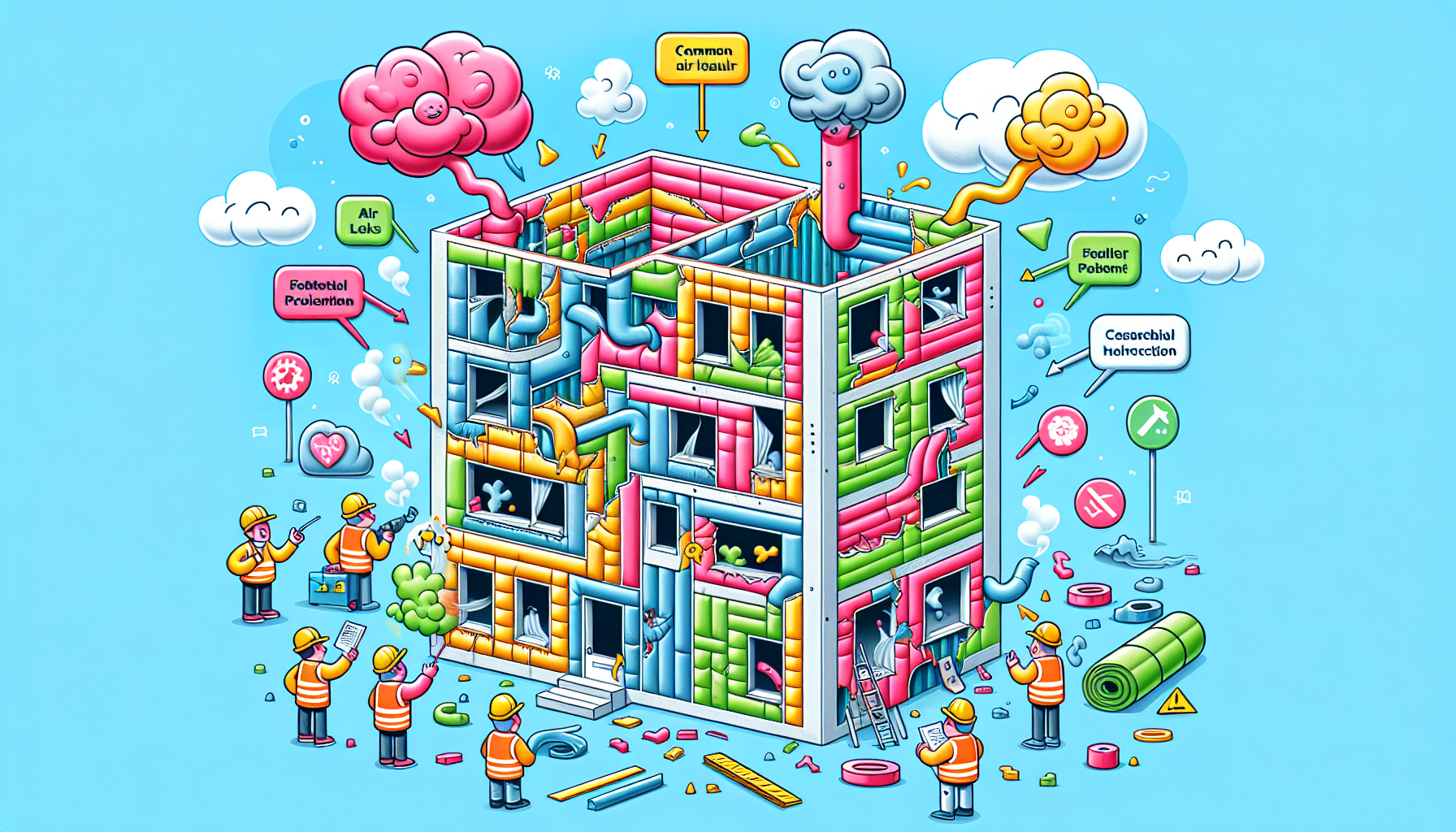Address
Energy Incentives, INC
3517 W. Canal Dr.
Kennewick, WA. 99336
Work Hours
Monday to Friday: 7AM - 7PM
Weekend: Day off
Address
Energy Incentives, INC
3517 W. Canal Dr.
Kennewick, WA. 99336
Work Hours
Monday to Friday: 7AM - 7PM
Weekend: Day off

Unlock the secrets behind your commercial air barrier test results and elevate your building’s performance to new heights. As a property manager in Washington State, understanding these results is crucial for enhancing energy efficiency, improving indoor air quality, and ensuring the longevity of your building. This comprehensive guide, brought to you by Energy Incentives, Inc., a family-run, women-owned building science company, will help you interpret your test results and implement effective solutions.
Air barrier testing is essential for maintaining energy efficiency, indoor air quality, and building durability. In Washington State, specific regulations mandate these tests to ensure compliance with energy codes and standards. Proper air barrier performance can lead to significant energy savings and cost reductions, making it a critical aspect of building management.
Energy Incentives, Inc. understands the importance of air barrier testing. As Energy Star Partner of the Year in 2017 and 2018, we know that proper air sealing can drastically reduce energy consumption and operational costs.
Washington State’s building codes require stringent air barrier testing. Staying compliant not only avoids penalties but also ensures your building operates at peak efficiency.
Effective air barriers prevent unwanted air leakage, reducing heating and cooling costs. This translates to substantial savings on your energy bills.

Air barrier testing evaluates the effectiveness of your building’s envelope in preventing air leakage. Common methods include blower door tests, infrared thermography, and smoke testing.
Air barrier testing involves pressurizing a building to measure air leakage rates and identify weak points in the building envelope.
Key metrics in air barrier test results include air leakage rates (measured in CFM) and pressure differences. Understanding these metrics is vital for identifying and addressing issues.
Interpreting your test results is crucial for implementing effective improvements. Common findings include high leakage areas, poorly sealed joints, and material failures.
At Energy Incentives, Inc., we’ve helped numerous Washington State buildings overcome air barrier challenges. For instance, a recent project in Seattle involved sealing high-leakage areas, resulting in a 30% reduction in energy costs.
Your test results directly impact your building’s performance in terms of energy efficiency, indoor air quality, and longevity. For a deeper understanding of the testing process, refer to our Ultimate Guide to Commercial Air Barrier Testing.
Improved air barrier performance reduces energy consumption, leading to lower utility bills and a smaller carbon footprint.
Effective air barriers prevent outdoor pollutants from entering the building, enhancing indoor air quality and occupant health.
Addressing air barrier issues extends the life of your building by preventing moisture intrusion and material degradation.
Identifying and addressing problem areas in your test results is crucial for enhancing performance.
Focus on high-leakage areas, poorly sealed joints, and material failures highlighted in your test results.
Hiring Professionals
When selecting contractors, ensure they have the necessary certifications and experience. Energy Incentives, Inc. boasts a team of certified Energy Star Raters, PTCS certified professionals, and Level 1 and Level 2 thermographers.
Regular testing and preventive maintenance are essential for maintaining air barrier performance.
Schedule periodic retesting to ensure continued performance and compliance with evolving building codes.
Implement routine checks and maintenance to prevent air barrier degradation over time.
Stay informed about Washington State’s building codes and standards to ensure your building remains compliant.
Understanding and improving your commercial air barrier test results is essential for optimizing your building’s performance. By following the steps outlined in this guide, you can enhance energy efficiency, improve indoor air quality, and ensure the longevity of your building. For professional assistance, contact Energy Incentives, Inc. today. To ensure your air barrier test is scheduled correctly, avoid these costly mistakes.
Energy Incentives, Inc. – Your trusted partner for air barrier testing and energy efficiency solutions in Washington State.